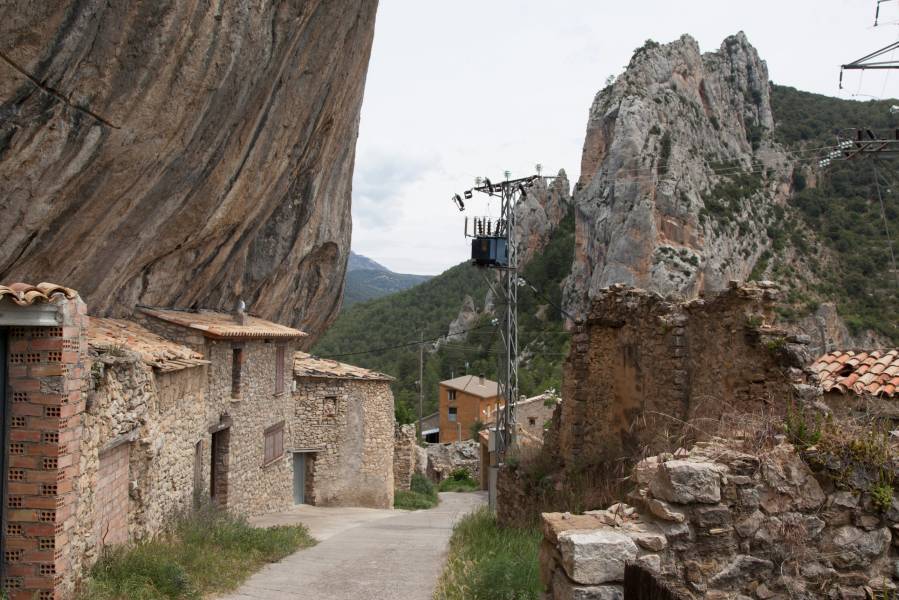Little history of Abella de la Conca that you'll want to know if you come for a few days in a holiday cottage
From the prehistoric era , a Late Bronze Age urn with geometric decoration bracelets has been found.
In addition, the site was occupied by the Romans , as there are two inscriptions from the period and some Roman construction elements in the cemetery.
The population in the Middle Ages is already documented in the middle of the 11th century, more specifically the castle in 1033, which would become the center of the barony of Abella. The strategic situation of Abella attracted the attention of the counts, who fortified the place and repopulated it.
What to visit in Abella de la Conca during your stay in a holiday cottage
Abella de la Conca has an extensive religious and cultural heritage. Its castle stands out, currently in ruins, but nestled in a strategic and spectacular location, which has been declared a Cultural Property of National Interest .
Also of note is the sanctuary of the Virgin of Carràmia , located on top of the mountain of the same name, and the following churches: Sant Esteve d'Abella de la Conca, Sant Vicenç de Bóixols, the Santíssima Trinitat de Faidella, Santa Maria of Mas Palou, Sant Antoni de la Rua, Santa Cauberola d'Abella de la Conca and Sant Miquel d'Abella de la Conca.
Tall essential elements are the Romanesque bridge of Bóixols , a medieval bridge known as Pont del Plomall and located in a natural paradise , in the middle of the ravine of the Rialb river. Just south of where the bridge is, there is the Cal Plomall farmhouse and about 100 meters away, the Molí del Plomall , a very old mill also called Molí del Pont or Plomall Nou and which today is a holiday cottage.
You can visit the abandoned villages of Carreu and Torre d'Eroles , whose churches point to the importance of these villages in times gone by.
Activities you can do in Abella de la Conca from your holiday cottage
The natural heritage of Abella de la Conca is inexhaustible and forms part of natural areas such as the Serra de Boumort and the Serra de Carreu . The Carreu Valley, the Boixols Valley and the Abella River are natural elements that also stand out for their landscape.
The entire municipality becomes ideal for climbing, hiking and mountain biking . In addition, there are numerous classic excursions that allow you to discover the territory in an active way, such as the one that leads to the foradot de l'Abella.
Abella de la Conca is surrounded by mid-mountain landscapes, such as the Serra de Boumort, a protected natural area where you can take mountain trails and see and hear the bellowing of deer in autumn.
What you can't miss
You can't miss the Honey Fair , a fair that takes place in June and has honey as its protagonist. The honey fair represents a very good opportunity to get to know the town and learn the process of making honey and to taste and buy what the producers of the region make.
